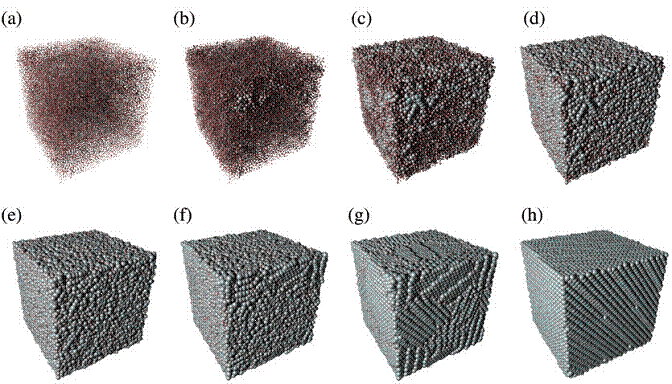
László Gránásy1,2, György Tegze1, Gyula Tóth3, Tamás Pusztai1
1Institute for Solid State Physics and Optics, Wigner Research Centre for Physics, P.O. Box 49, Budapest H-1525, Hungary
2BCAST, Brunel University, Uxbridge, Middlesex, UB8 3PH, United Kingdom
3Department of Mathematical Sciences, Loughborough University, Loughborough, Leicestershire, LE11 3TU, U.K.
A simple dynamical density functional theory, the phase-field crystal (PFC) model, was used to describe homogeneous and heterogeneous crystal nucleation in two-dimensional (2D) monodisperse colloidal systems and crystal nucleation in highly compressed Fe liquid. External periodic potentials were used to approximate inert crystalline substrates in addressing heterogeneous nucleation. In agreement with experiments in 2D colloids, the PFC model predicts that in 2D supersaturated liquids, crystalline freezing starts with homogeneous crystal nucleation without the occurrence of the hexatic phase. At extreme supersaturations, crystal nucleation happens after the appearance of an amorphous precursor both in two and three dimensions. Contrary to expectations based on the classical nucleation theory, it is shown that corners are not necessarily favourable places for crystal nucleation. Finally, it is shown that by adding external potential terms to the free energy, the PFC theory can be used to model colloid patterning experiments.


